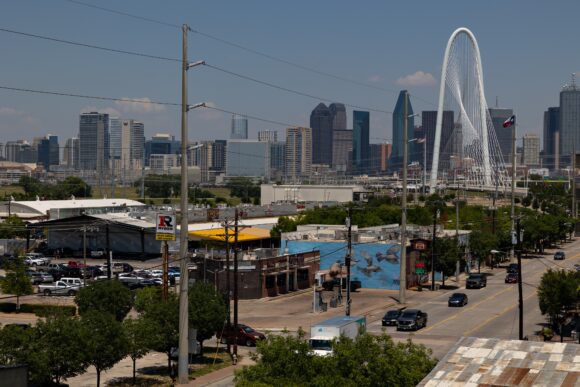Dallas Fed Warns of Slowing Growth in Trade-Reliant Texas

Texas, the nation’s top trading state, is facing a weakening economic outlook as the Trump administration’s sweeping trade and immigration policies fuel worries among businesses about higher costs, reduced demand and labor shortages, according to the Federal Reserve Bank of Dallas.
Even before President Donald Trump sent shockwaves around the world on Wednesday with the steepest US tariffs in a century, confidence among Texas business leaders was faltering. The Dallas Fed’s March survey of manufacturers and service providers showed a surge of uncertainty, with many firms citing trade duties as a major concern.
“As the nation’s leading trading state, Texas is highly exposed to tariffs,” Dallas Fed researchers Jesus Cañas and Diego Morales-Burnett said in a report, which was based on surveys conducted before Trump’s announcement this week. “Uncertainty about trade policy and the prospect of higher tariffs has partly led to dimming company outlooks.”
Texas, a reliably Republican state that has enjoyed robust economic expansion in recent years, accounts for 16% of total US trade, more than any other state, the Dallas Fed said. The reliance on global commerce has made it particularly vulnerable to rising tariffs on imports from major partners including China and Canada, as well as Mexico, which is the state’s main destination for exports.
The potential slowdown in Texas would be an abrupt change for an economy that has boomed in recent years as companies including Tesla Inc., Chevron Corp. and Charles Schwab Corp. have moved their headquarters to the state. Others such as Goldman Sachs Group Inc. are expanding their footprint in Texas, which prides itself on light business regulation and the lack of a state income tax.
The state’s gross domestic product of $2.6 trillion would make it the world’s eighth-largest economy if it was its own country.
The Dallas Fed estimates that imposing 25% tariffs on Canadian and Mexican goods and an additional levy of more than 10% on Chinese imports would cut 1.5 percentage points from economic growth in Texas, and potentially eliminate about 100,000 jobs.
The estimated reduction in output is consistent with a recent analysis by Perryman Group, the authors said. Manufacturing-heavy regions and areas near the US-Mexico border would bear the brunt of the losses.
Trump said Wednesday he will apply at least a 10% tariff on all exporters to the US, with even higher duties on some 60 nations, to counter large trade imbalances with the US. That includes some of the country’s biggest trading partners, such as China — which now faces a tariff of well above 50% on many goods — as well as the European Union, Japan and Vietnam.
For now, the new measures don’t include Canada and Mexico, which are embroiled in a separate dispute with the US.
In Texas, US immigration policy is also clouding the economic outlook. The Dallas Fed noted that roughly 10% of the immigrants who arrived in the US during the surge of crossings at the southern border between 2021 and 2024 settled in Texas, and many employers now rely on those workers to fill jobs.
“Going forward, Texas businesses may have to balance the potential positive effects of anticipated deregulation and tax cuts with the possible negative impact of more restrictive trade and immigration policy,” the Dallas Fed said in the report.
Photo: The potential slowdown in Texas would be an abrupt change for an economy that has boomed in recent years. Photographer: Shelby Tauber/Bloomberg
Copyright 2025 Bloomberg.
Topics
Texas
The most important insurance news,in your inbox every business day.
Get the insurance industry’s trusted newsletter





